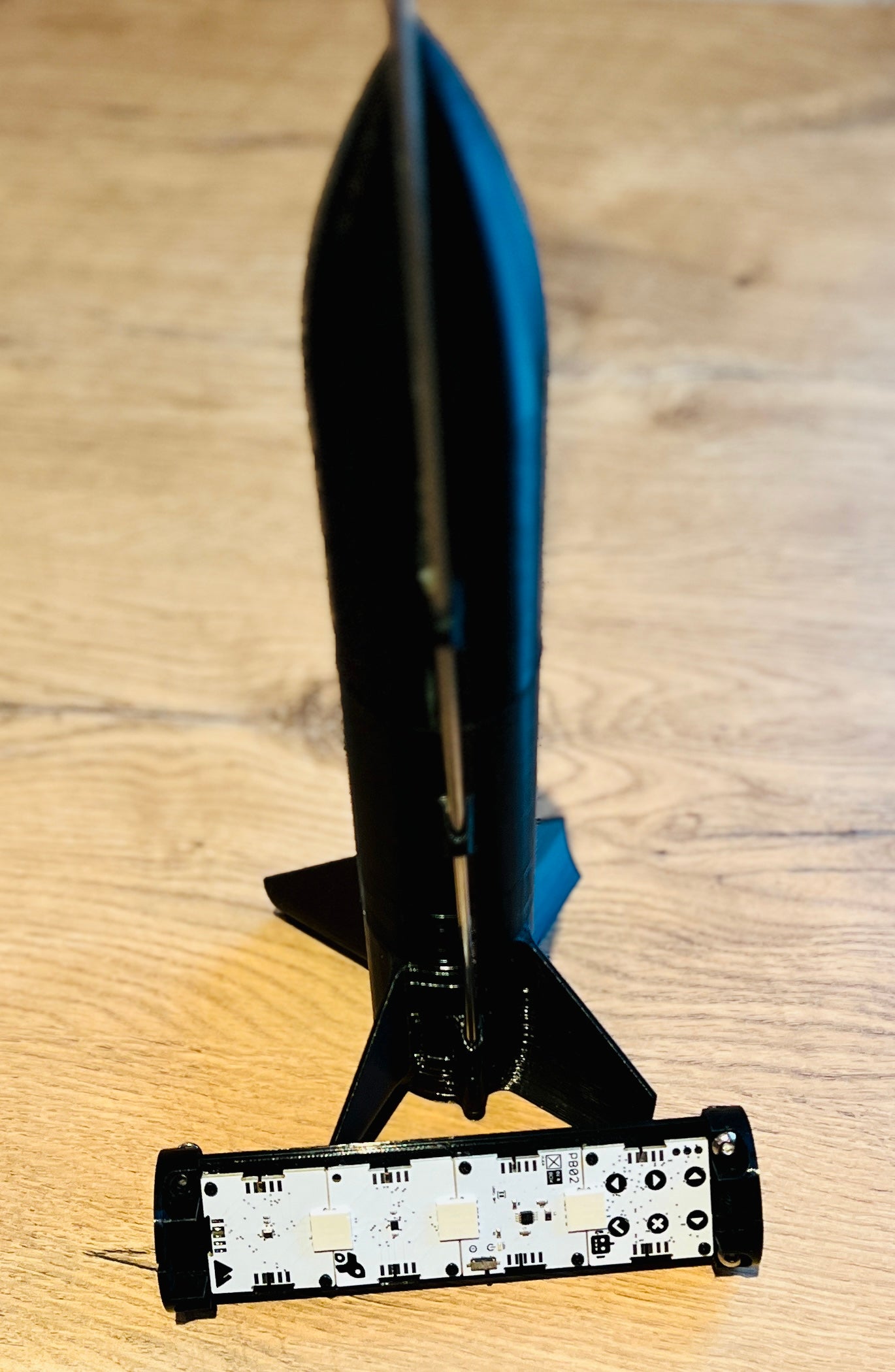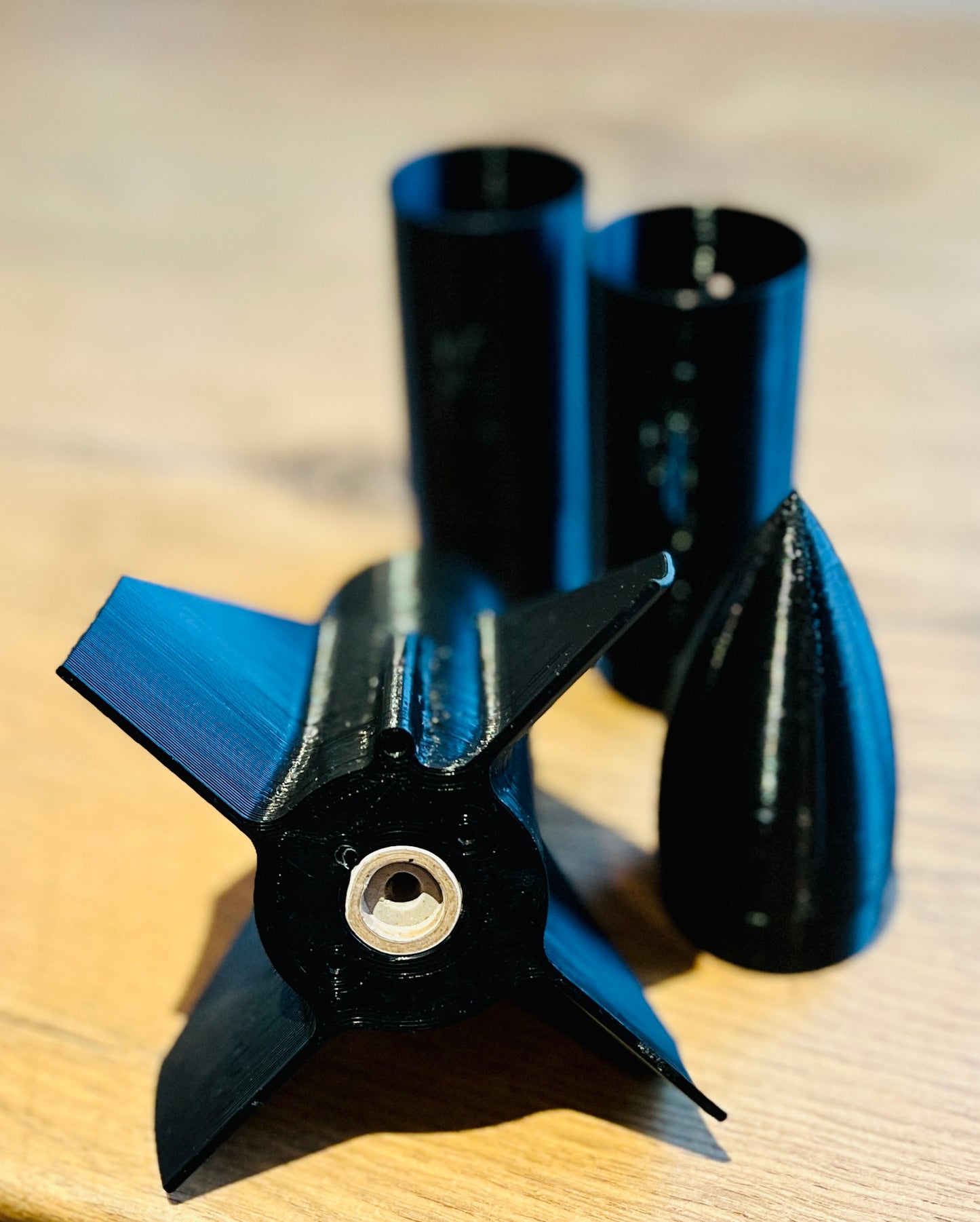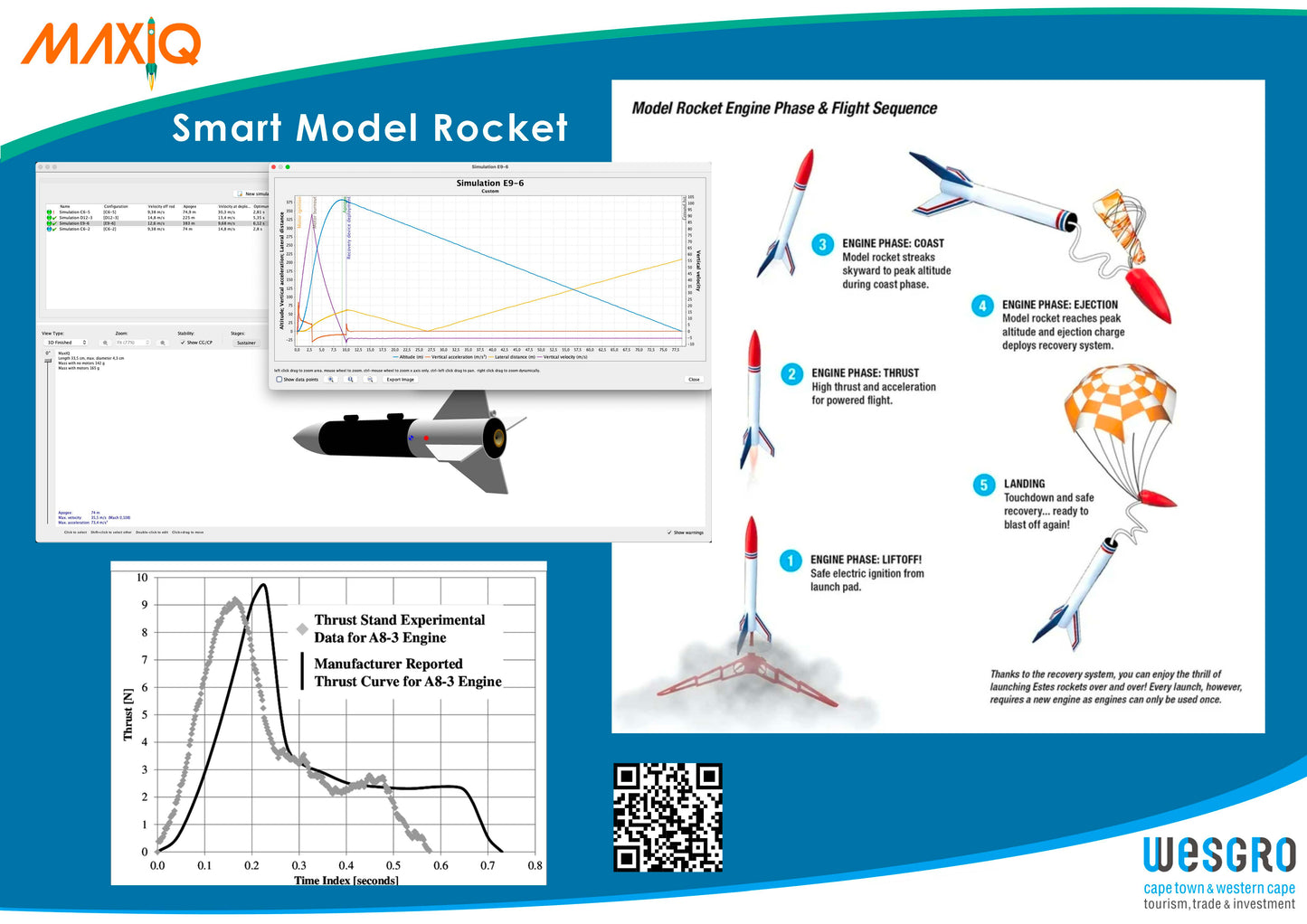MaxIQ
3D Smart Model Rocket Project
3D Smart Model Rocket Project
Couldn't load pickup availability
Using MaxIQ’s xChips as the flight computer, students embark on an immersive journey to design, build, and launch their own 3D printed rockets, bringing STEM concepts to life through hands-on experience. Beginning with 3D printing, students take full ownership of their rocket’s structure, customizing each component to optimize aerodynamics and payload capacity. They configure the xChips payload to record critical flight data, such as altitude and velocity, which is then transmitted to ground stations during flight. This project gives students a rare opportunity to engage in every phase of the engineering process, from designing in CAD software to observing their designs in action during the rocket launch.
The kit includes:
- 3 x MaxIQ Space STEM kits (MK01)
- Barometer
- Accelerometer (XYZ)
- Rechargeable battery unit for the payload
- Launch platform, remote ignition control, safety glasses, and all other necessary accessories
- Space model rocket motors
- 3D print files and instructions
Using xChips as the flight computer, participants design and print their own model rocket, configure their payload, and launch on a local field.Teachers are supported with a full Canvas course with all the materials required to engage their students in this activity. This curriculum links to:
- Physics and Newtonian mechanics
- Mechanical design, additive manufacturing and 3D printing
- Chemistry and enthalpy/energy calculations
- Electronics, payload design, and power management
- Software development, coding, and testing
- Research design, the scientific method, and data collection/analysis
Following the launch, students analyze the data collected during the flight to evaluate the rocket’s performance and identify areas for improvement. This iterative process, grounded in scientific inquiry and testing, enables students to refine their designs based on real-world results. The comprehensive curriculum supports teachers via a Canvas course, aligning the project with key academic subjects: physics, chemistry, electronics, mechanical design, and data analysis. This cross-disciplinary approach reinforces foundational principles, such as Newtonian mechanics, thermodynamics, and software development, while allowing students to experience the full scope of research design, experimentation, and data analysis—preparing them with practical skills for future STEM challenges.
Share





